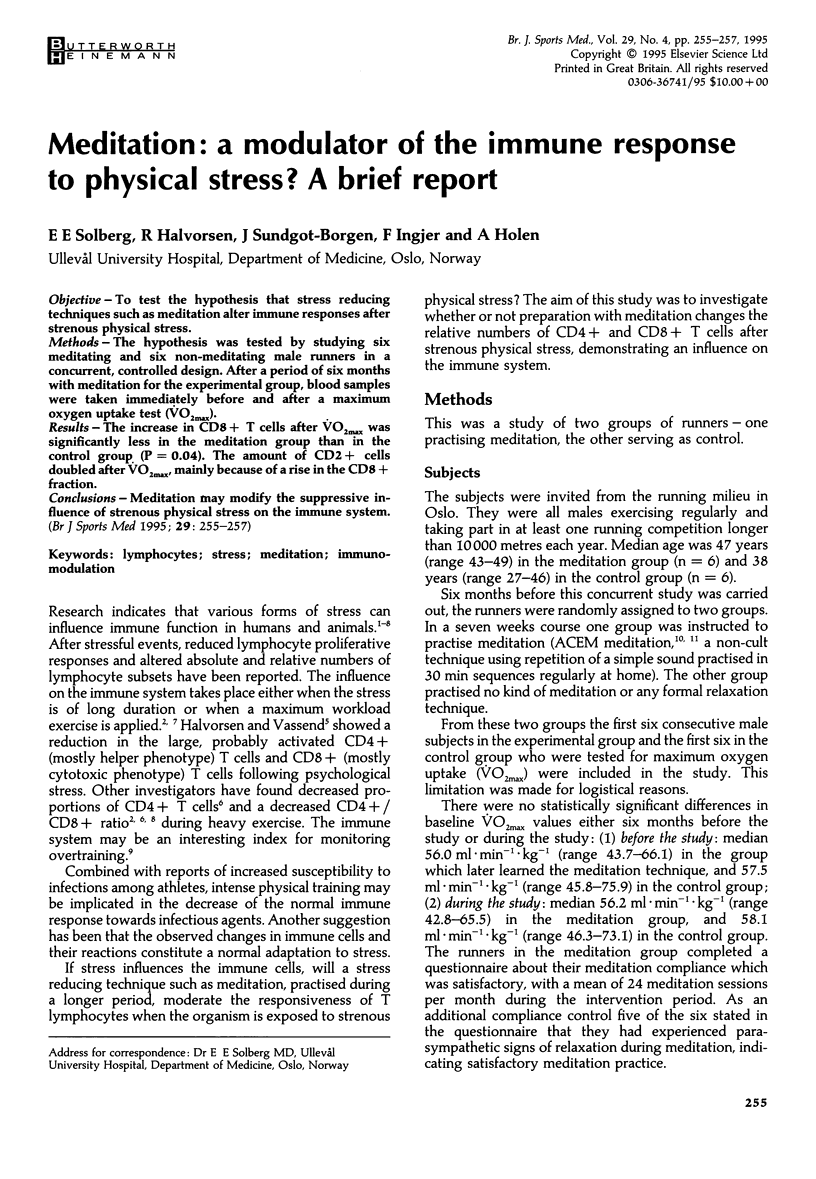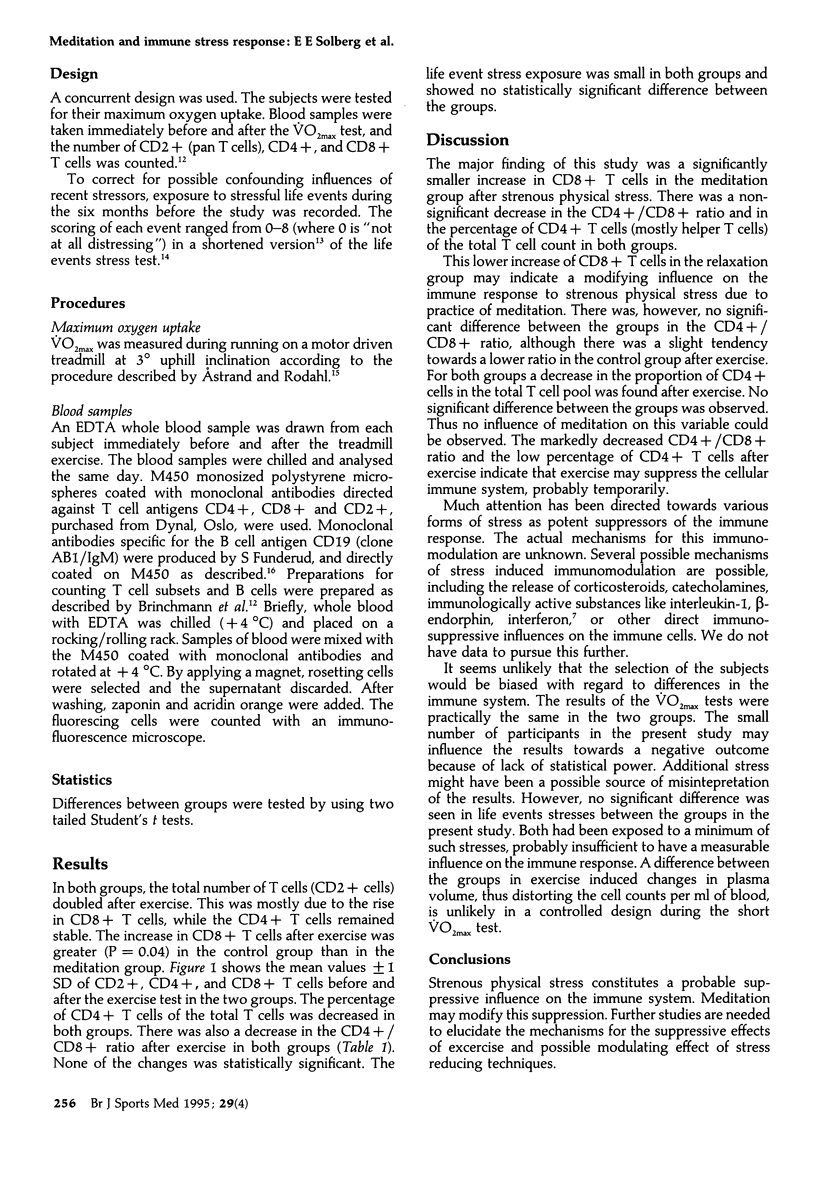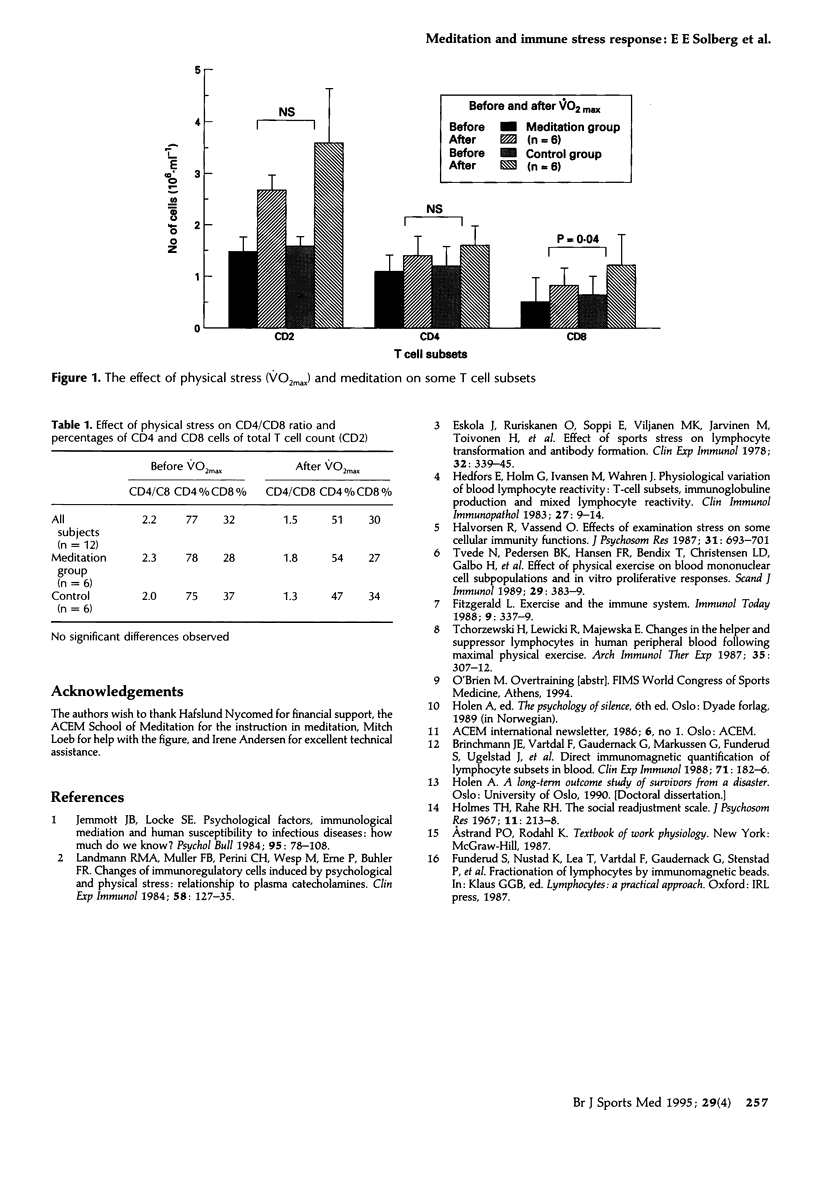Abstract
OBJECTIVE: To test the hypothesis that stress reducing techniques such as meditation alter immune responses after strenous physical stress. METHODS: The hypothesis was tested by studying six meditating and six non-meditating male runners in a concurrent, controlled design. After a period of six months with meditation for the experimental group, blood samples were taken immediately before and after a maximum oxygen uptake test (VO2max). RESULTS: The increase in CD8+ T cells after VO2max was significantly less in the meditation group than in the control group (P = 0.04). The amount of CD2+ cells doubled after VO2max, mainly because of a rise in the CD8+ fraction. CONCLUSIONS: Meditation may modify the suppressive influence of strenous physical stress on the immune system.
Full text
PDF


Selected References
These references are in PubMed. This may not be the complete list of references from this article.
- Brinchmann J. E., Vartdal F., Gaudernack G., Markussen G., Funderud S., Ugelstad J., Thorsby E. Direct immunomagnetic quantification of lymphocyte subsets in blood. Clin Exp Immunol. 1988 Jan;71(1):182–186. [PMC free article] [PubMed] [Google Scholar]
- Eskola J., Ruuskanen O., Soppi E., Viljanen M. K., Järvinen M., Toivonen H., Kouvalainen K. Effect of sport stress on lymphocyte transformation and antibody formation. Clin Exp Immunol. 1978 May;32(2):339–345. [PMC free article] [PubMed] [Google Scholar]
- Fitzgerald L. Exercise and the immune system. Immunol Today. 1988 Nov;9(11):337–339. doi: 10.1016/0167-5699(88)91332-1. [DOI] [PubMed] [Google Scholar]
- Halvorsen R., Vassend O. Effects of examination stress on some cellular immunity functions. J Psychosom Res. 1987;31(6):693–701. doi: 10.1016/0022-3999(87)90018-3. [DOI] [PubMed] [Google Scholar]
- Hedfors E., Holm G., Ivansen M., Wahren J. Physiological variation of blood lymphocyte reactivity: T-cell subsets, immunoglobulin production, and mixed-lymphocyte reactivity. Clin Immunol Immunopathol. 1983 Apr;27(1):9–14. doi: 10.1016/0090-1229(83)90051-x. [DOI] [PubMed] [Google Scholar]
- Holmes T. H., Rahe R. H. The Social Readjustment Rating Scale. J Psychosom Res. 1967 Aug;11(2):213–218. doi: 10.1016/0022-3999(67)90010-4. [DOI] [PubMed] [Google Scholar]
- Jemmott J. B., 3rd, Locke S. E. Psychosocial factors, immunologic mediation, and human susceptibility to infectious diseases: how much do we know? Psychol Bull. 1984 Jan;95(1):78–108. [PubMed] [Google Scholar]
- Landmann R. M., Müller F. B., Perini C., Wesp M., Erne P., Bühler F. R. Changes of immunoregulatory cells induced by psychological and physical stress: relationship to plasma catecholamines. Clin Exp Immunol. 1984 Oct;58(1):127–135. [PMC free article] [PubMed] [Google Scholar]
- Tchórzewski H., Lewicki R., Majewska E. Changes in the helper and suppressor lymphocytes in human peripheral blood following maximal physical exercise. Arch Immunol Ther Exp (Warsz) 1987;35(3):307–312. [PubMed] [Google Scholar]
- Tvede N., Pedersen B. K., Hansen F. R., Bendix T., Christensen L. D., Galbo H., Halkjaer-Kristensen J. Effect of physical exercise on blood mononuclear cell subpopulations and in vitro proliferative responses. Scand J Immunol. 1989 Mar;29(3):383–389. doi: 10.1111/j.1365-3083.1989.tb01137.x. [DOI] [PubMed] [Google Scholar]


